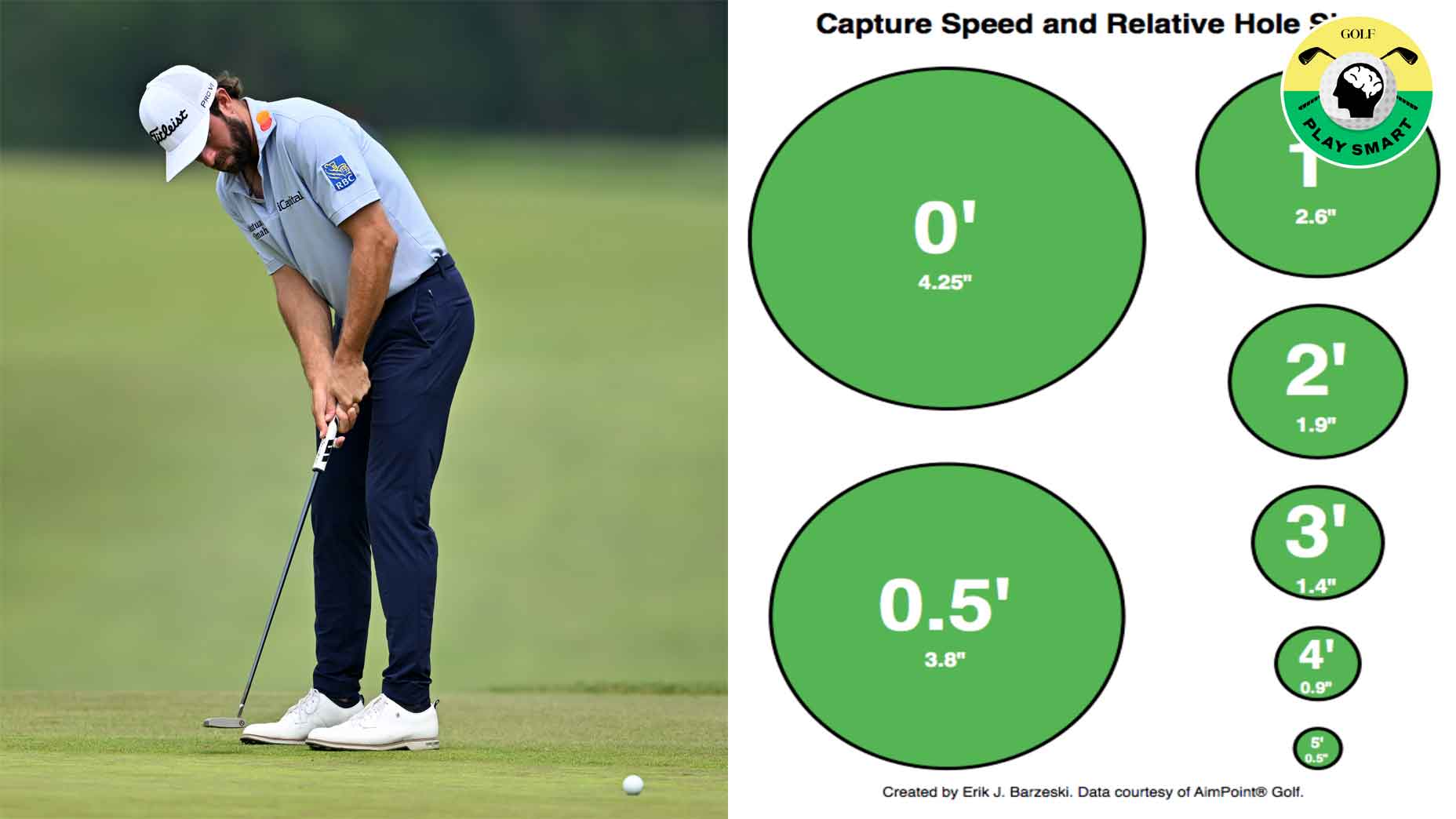To paraphrase the great Yogi Berra: putting is 50 percent mental … and the other half is mental.
No one moment in golf quite compares to the high-pressure putt, be it for money, for glory, or just for the sake of a good score. The best putters grind for hours on the green, working tirelessly in the effort of making the pressure-packed putt feel a little more comfortable. Of course, good putting mechanics help, but mechanics only go so far when standing over a three-footer with the match on the line.
Rather, it is helpful to have a system — a way of doing things that applies not only to the physical but also to the mental and emotional — that allows us to produce consistent results irrespective of the context. A system like the one legendary putter Brad Faxon laid out in a Twitter video on Monday morning.
In the video, Faxon reveals his theory of “continuous motion” — a core pillar of his overall putting strategy centered around avoiding tension. In essence, the idea is simple: if you build constant movement into your putting routine, it will keep you from building tension, which will in turn help you maintain your mechanics and produce a consistent, repeatable putting stroke.
As Faxon explains, his philosophy of continuous motion involves maintaining movement in four key areas: the putter head, feet, hands and head. To practice this yourself, listen to Faxon’s keys to movement in each of those four areas.
Putterhead: “Watch the putterhead. The constant motion, the tapping down of it, the adjusting of it, the moving side to side.”
Feet: “Now we’re going to change views and watch the feet, the feet are active here. Toes are tapping, you can’t see that, but feet are always moving.”
Hands: “Now the hands, watch the hands on the grip, the milking of the shaft through the fingertips, almost like you’re playing the clarinet. The fingers are moving on the shaft, then a little forward press.”
Head: “Now watch your head movement, the swivel of the neck, getting the eyes to focus on the target once, twice and then you go. If you can do this and have constant motion, you’ll putt better.”
Faxon is widely regarded as one of the best putters ever, owning the PGA Tour single-season record for putts per green in regulation and more recently advising many of the game’s best players on how to improve their own technique and consistency around the greens. He executes his theory of continuous motion in his own putting stroke, knocking out simultaneous movement in the span of roughly 10 seconds.
You can practice this yourself without even rolling putts. Simply stand over your putter and build a movement routine in each of the four areas until you have a consistent, repeatable motion. It’s likely to feel a bit awkward at first, but if you’re capable of ingraining movement into your routine, Faxon says, you’ll find yourself more consistent and more confident, no matter the situation.











